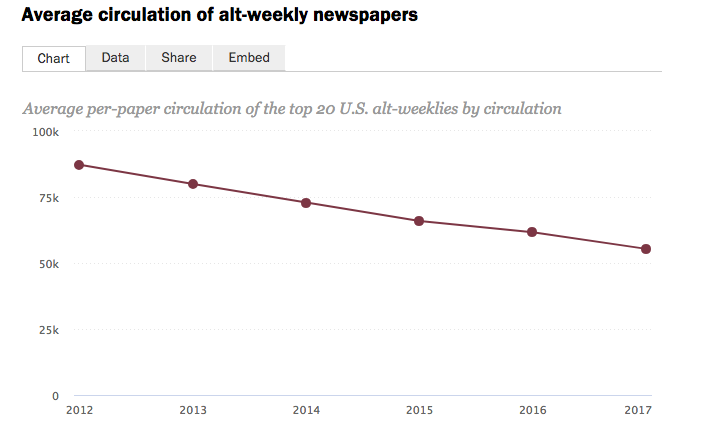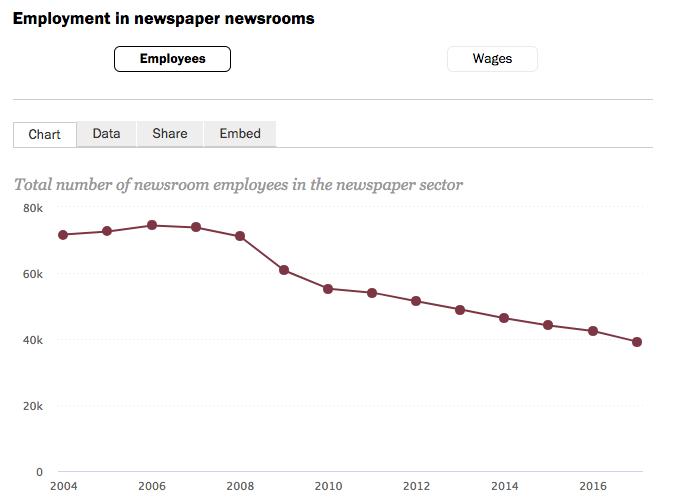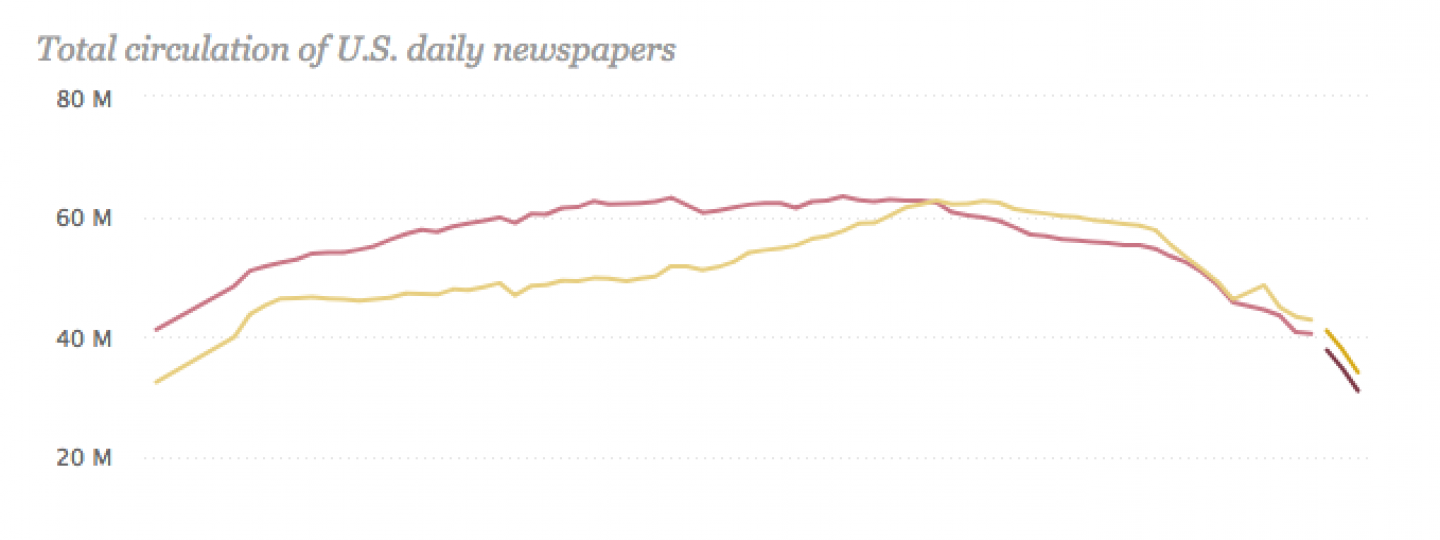You only have to look at the graphs in Pew's latest report on the state of the media to get a sense of the challenges facing U.S. newspapers, where employment has dropped 45 percent since 2004, according to the report.
Here's the latest on what's happening to print circulation:

Here's alt-weekly circulation:

Here's ad and circulation revenue:

Here's employment at newspapers:

And wages at newspapers:

The newspapers fact sheet does show that, accounting for digital circulation booms at The Washington Post, The New York Times and The Wall Street Journal, weekday digital circulation rose 10 percent from 2016 to 2017. Unique visitors stayed about the same in that time frame, "making this the first year since we began tracking the trend that did not show a double-digit rise in web traffic." Average time per visit also stayed the same.
One line that went up in the right direction: Revenue from digital advertising. In 2011, it made up 17 percent of newspaper ad revenue. In 2016, it made up 29 percent, and in 2017, it made up 31 percent.
You can see the full report and how it was produced here.
Taken as a whole, the report shows further evidence of an embattled industry. But pull some of those individual news organizations out, and you get a more nuanced picture.
Last month, Poynter's Rick Edmonds wrote about The Minneapolis Star Tribune and how it's slowly turned revenue numbers up. The Santa Rosa Press Democrat, which won a Pulitzer for breaking news coverage this year, also has local owners, hasn't shrunk staff, has created a magazine, an events business that brought in $1 million in revenue and has shifted 38 percent of revenue to circulation and readership.
Alt-weeklies also show a drop in circulation and the organization that represents them, The Association of Alternative Newsmedia, lost 27 members from its highest when we spoke last year. But at the same time, a group that represents local online publishers, LION, saw its membership rise to 160 news organizations in 39 states.
One of those members, Berkeleyside, raised $1 million in a direct public offering.







